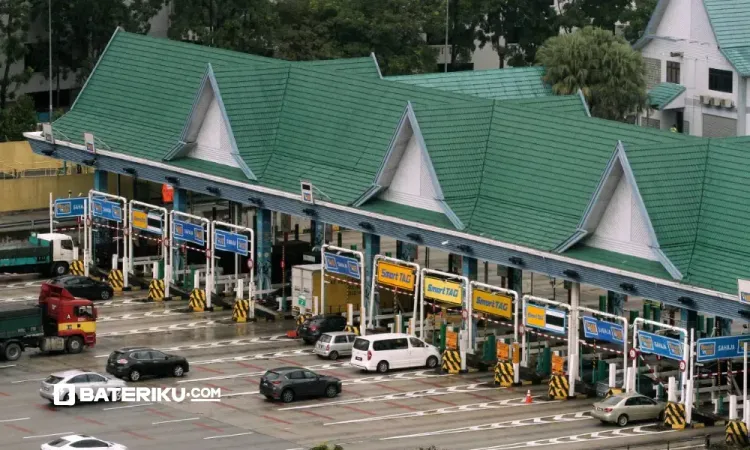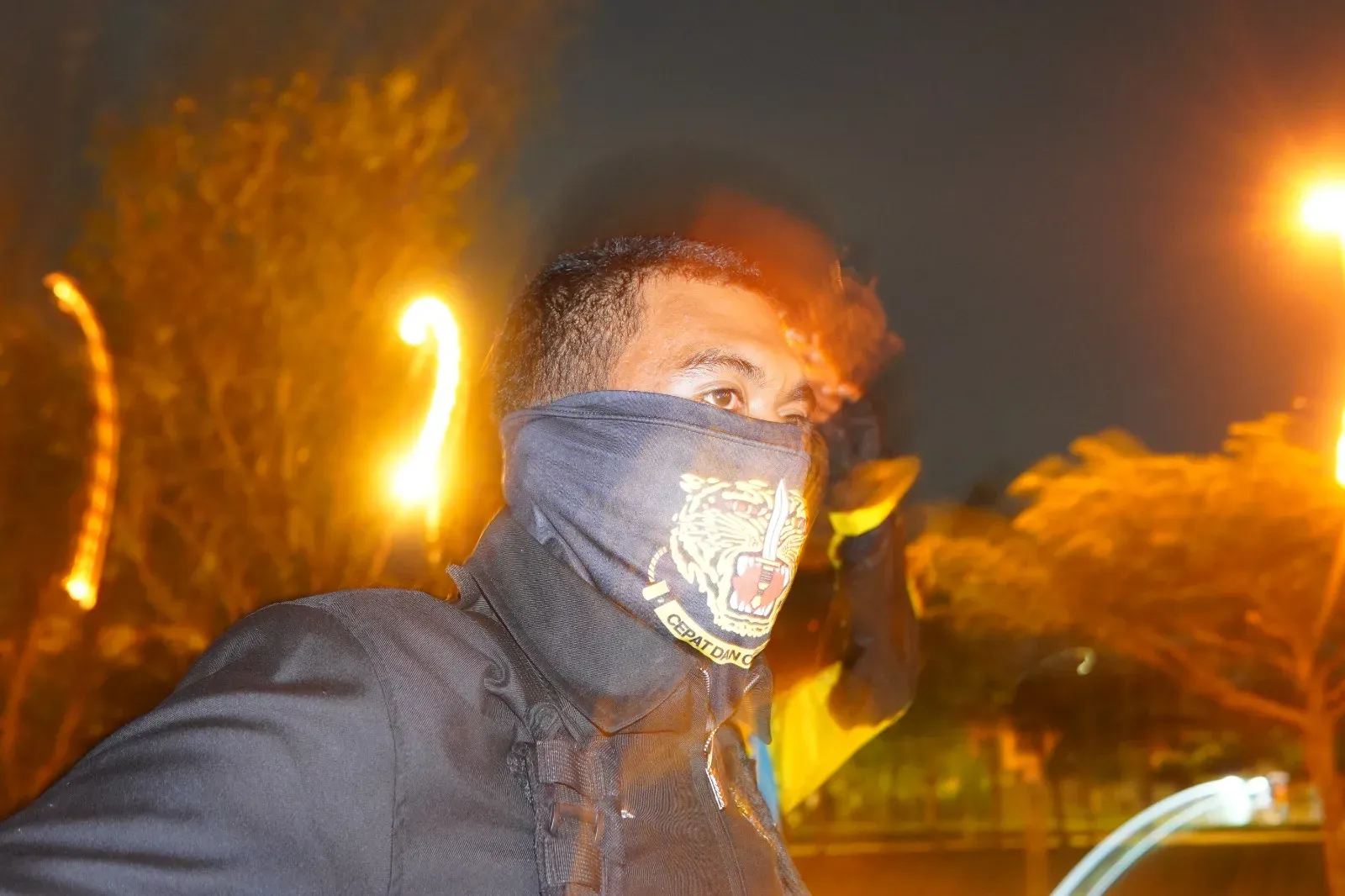To ensure smooth traffic flow on Malaysia’s major highways, the Malaysian Highway Authority (LLM) continues to enhance toll system efficiency through various initiatives such as adding new lanes, expanding toll plazas, and implementing more advanced contactless payment systems.
By the end of 2024, there were 38.7 million registered vehicles in Malaysia the highest in history. In the same year, new vehicle registrations rose by 18%, equivalent to more than 799,000 units compared to 2023. This increase has also contributed to congestion at major toll plazas such as Sungai Besi, Damansara, and Duta.
Latest highway toll discount information
Malaysian highway users will enjoy a toll payment discount for two days on 23 and 24 December 2025 in conjunction with the Christmas celebration.
The discount applies to private Class 1 vehicles nationwide. Class 2 vehicles are also eligible but only when using the Penang Bridge. As with past practice, two toll plazas are excluded from the discount. These are the Sultan Iskandar Building toll plaza operated by PLUS and the Malaysia–Singapore Second Link Expressway.
To implement this initiative, the government will channel an estimated RM20.65 million in compensation to the affected highway concessionaires.
Through this measure, the MADANI government hopes the discount will help reduce travel costs for people returning to their hometowns, visiting relatives, or going on holiday during the festive period.
The incentive is also intended to reduce road congestion on 25 December 2025, as motorists are expected to travel earlier to take advantage of the discount.
The government advises road users to plan their journeys carefully. Applications such as TuJu by the Malaysian Highway Authority and MyPLUS by PLUS are useful tools to check traffic conditions on major highways in Malaysia.
In addition to app updates, users can also follow the latest traffic information through LLM’s official social media channels.
Evolution of Highways and Toll Payment Systems in Malaysia
Malaysia’s toll payment system has evolved from cash payments to fully electronic systems. This gradual transition ensures a faster, more convenient, and safer user experience.
1. Cash (Pre-2000)
Drivers had to stop at toll booths and make cash payments to toll operators.
2. Touch 'n Go (TNG)
Introduced around 1997, the TNG prepaid card system enabled cashless payments with just a tap of the card at the toll reader.
The TNG card is not only used for toll payments but also functions as a payment method for:
- Public transportation (MRT, LRT, Monorail, RapidKL Buses)
- Automated parking systems
- Selected convenience stores and petrol stations
The prepaid card uses Near Field Communication (NFC) technology, allowing users to reload credit directly via smartphones that support the feature.
3. SmartTAG
SmartTAG is an infrared device used together with the TNG card for payment without stopping. It speeds up transactions and reduces congestion.
SmartTAG reads the TNG card information via infrared as the vehicle passes through the toll lane. Some modern vehicles now come equipped with built-in SmartTAG functionality.
Although this technology is gradually being replaced by RFID, SmartTAG is still supported and used on several major highways
4. RFID (Radio Frequency Identification)
RFID was introduced by Touch ‘n Go Digital in collaboration with LLM and PLUS Malaysia Berhad, allowing automatic toll payment via RFID stickers on vehicles. Payments are made directly through the Touch ‘n Go eWallet.
Since October 2024, selected highways now support the Open Payment System, including:
- Sungai Besi Expressway (BESRAYA)
- Duta – Ulu Klang Expressway (DUKE)
- SMART Tunnel Expressway
- Kuala Lumpur – Putrajaya Expressway (MEX)
- Kajang SILK Expressway
- Damansara – Puchong Expressway (LDP)
- Shah Alam Expressway (KESAS)
5. MyDebit, Visa and Mastercard
September 2023, the Malaysian government introduced the Open Payment System, allowing users to pay tolls using Visa or Mastercard debit and credit cards no need for additional cards like TNG. Now, your bank card alone can get you through toll booths with ease.
Highways supporting this system include:
- Ampang – Kuala Lumpur Elevated Highway (AKLEH)
- Guthrie Corridor Expressway (GCE)
- Sungai Besi Expressway (BESRAYA)
- New Pantai Expressway (NPE)
- Penang Bridge (JPP)
- Butterworth – Kulim Expressway (BKE)
- Damansara – Puchong Expressway (LDP)
- Western KL Traffic Dispersal System (SPRINT)
- Shah Alam Expressway (KESAS)
- SMART Tunnel
- Kuala Lumpur – Putrajaya Expressway (MEX)
- Duta – Ulu Klang Expressway (DUKE)
 (Sources: SoyaCincau)
(Sources: SoyaCincau)
6. ANPR (Automatic Number Plate Recognition)
ANPR (Automatic Number Plate Recognition) is a barrier-free toll system that uses high-resolution cameras to automatically detect vehicle license plate numbers without the need to stop.
The main goal of this system is to speed up traffic flow and reduce dependency on a single payment platform.
Based on Paultan.Org, users who wish to try the ANPR toll payment system can download the JustGo application developed by PLUS Malaysia Berhad, available on Google Play and the App Store. Once downloaded, users simply need to fill in their personal details and select a payment method such as Touch ‘n Go eWallet or credit/debit card. No registration fees are required.
The initial testing phase involves 35 lanes across 13 toll plazas between Hutan Kampung and Sungai Dua in northern Penang. The project will be gradually expanded across the North-South Expressway (PLUS) once the system is confirmed to operate smoothly. This initiative is expected to form a key foundation for the full implementation of the Multi-Lane Free Flow (MLFF) system by 2027.
 (Sources: Lowyat.NET)
(Sources: Lowyat.NET)
Types of Toll Systems
Highways are the lifeline of Malaysia’s land transport, connecting states and cities nationwide. Their construction not only improves travel convenience but also shortens journey times for millions of road users daily.
The main purpose of toll collection is to fund highway maintenance, road repairs, and facility upgrades such as toll plazas, pedestrian bridges, public toilets, and rest areas (R&R). The funds also ensure safety and smooth traffic flow across all main routes.
In Malaysia, there are two main toll systems used across highways:
Open Toll System
In this system, drivers pay a fixed rate each time they pass through a toll plaza, regardless of the travel distance. The amount remains the same whether you drive a short or long distance on the same expressway.
List of Open Toll Highways and Route Codes:
- E3 – Second Link Expressway
- E5 – Shah Alam Expressway (KESAS)
- E7 – Cheras-Kajang Highway
- E8 – Kuala Lumpur–Karak Expressway (KLK)
- E9 – Sungai Besi Expressway
- E10 – New Pantai Expressway (NPE)
- E11 – Damansara–Puchong Expressway (LDP)
- E12 – Ampang–Kuala Lumpur Elevated Highway (AKLEH)
- E15 – Butterworth–Kulim Expressway (BKE)
- E17 – Butterworth Outer Ring Road (BORR)
- E18 – Kajang SILK Expressway
- E20 – Maju Expressway (MEX)
- E23 – SPRINT Expressway
- E24 – Tun Salahuddin Bridge
- E25 – Kuala Lumpur–Kuala Selangor Expressway
- E29 – Seremban–Port Dickson Highway (SPDH)
- E30 – New North Klang Straits Bypass (NNKSB)
- E33 – Duta–Ulu Klang Expressway (DUKE)
- E35 – Guthrie Corridor Expressway (GCE)
- E3 – Penang Bridge
Closed Toll System
In the closed toll system, payment is based on actual travel distance. Drivers receive an entry ticket or electronic record (via TNG, RFID, or ANPR) at the entry point, and payment is made upon exit at the destination toll plaza.
The longer the distance, the higher the toll fee following the “pay-as-you-use” concept.
List of Closed Toll Highways and Route Codes:
- E1 – New Klang Valley Expressway (NKVE)
- E1 – North–South Expressway (PLUS) Northern Route
- E2 – North–South Expressway (PLUS) Southern Route
- E6 – North–South Expressway Central Link (ELITE)
- E8 – East Coast Expressway (LPT)
- E22 – Senai–Desaru Expressway (SDE)
- E26 – South–Klang Valley Expressway (SKVE)
Toll Rates
Toll rates for each highway are determined and regulated by the Lembaga Lebuhraya Malaysia (LLM) to ensure they are consistent with travel distance, vehicle type, and maintenance standards nationwide.
Lembaga Lebuhraya Malaysia (LLM) has also developed a Toll Calculator system that allows users to check the latest toll rates, ensuring your journey is smoother, well-planned, and free from any inconvenience at toll plazas.
Since Malaysia has an extensive highway network covering Peninsular Malaysia, Sabah, and Sarawak, toll rates are structured to ensure proper maintenance and a comfortable, safe driving experience for all users. With new highways added yearly, a structured toll system is essential to fund operations, maintenance, and infrastructure improvements.
Tips: Before Entering Toll Areas
- Ensure your TNG card or eWallet balance is sufficient.
- Keep your TNG card easily accessible.
- Avoid using dirty or damaged RFID tags to prevent detection errors.
- Identify the correct lane for your payment method (TNG, RFID, SmartTAG, or Open Payment).
- Check overhead signboards and road markings for lane identification.
Malaysia Highway Fun Facts.
Longest Highway:
PLUS Highway 966 km across 8 states.
Busiest Highway:
Federal Highway connecting Kuala Lumpur, Petaling Jaya, Shah Alam, and Klang.
Oldest Tunnel:
Menora Tunnel, opened in 1978 or 1979, now over 45 years old.
Longest Tunnel:
SMART Tunnel (E38) 3.3 km.
World’s Largest Roundabout:
Persiaran Sultan Salahuddin Abdul Aziz Shah, Putrajaya 3.5 km in circumference, completed in 1999.
Frequently Asked Questions (FAQ) About Highway
1. Can I avoid tolls?
Yes. Use Federal Route 1 and state roads, but travel times will be significantly longer.
2. Do motorcycles pay tolls in Malaysia?
No. Most highways provide dedicated motorcycle lanes for smoother travel.
3. What’s the difference between R&R and Lay-Bys?
R&R (Rest and Service Areas) are located every 80–100 km, offering food stalls, motels, prayer rooms, fuel stations, ATMs, and public facilities.
Lay-Bys are smaller rest stops every 25–50 km, providing basic amenities such as toilets, parking, and sometimes small food stalls or prayer rooms.
4. What should I do if my car breaks down on a highway?
- Turn on hazard lights to alert other drivers.
- Move your car to the roadside if possible.
- Call for assistance: a) PLUS Helpline (1800-88-0000) for free roadside aid such as tire changes or towing to the nearest toll plaza. b) Your insurance company’s helpline, as stated on your policy or road tax sticker. c) Contact Bateriku
Contact Bateriku?
Yes, contact Bateriku if you faced any car problems wherever you are on the highway, at the office, at home, or anywhere else. Flat tire, car won’t start at the rest stop, or you’ve run out of fuel in the middle of the road? The solution is right at your fingertips. From changing tires, replacing batteries, unlocking cars, delivering fuel, to towing services everything can be done, just say the word.
4 Easy Steps:
- Stay calm
- Go to Bateriku’s website
- Fill in simple details
- Wait for help to arrive
Four step for solutions.

